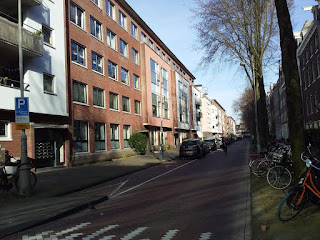A little background: I really disliked celebrated Korean 2019 movie "Parasite" to such degree that I even asked myself am I stranger to Asian cinema. After all, besides Akira Kurosawa I don't really know much about Far East cinematography and if pressed, could probably just name a few titles or actors but nothing more. Director Yasujirō Ozu apparently comes from the same generation like Kurosawa and is highly regarded but unknown to me - until I was obliged to watch this movie, my very first introduction to his oeuvre. It took me a few attempts, because nowadays I suffer from short attention span and can hardly watch a movie in one setting (forget about reading books) but finally I did finished, with some serious rewinding and re-visiting earlier scenes.
First of all, there is a superb, clean version available on youtube and the movie is glorious in a sharp black & white technique. It really looks stunning and this might be the only movie that I have ever seen where every single scene makes a sense and I would not take anything away from it. The story itself is interspersed with glimpses of the nature that serves almost like a Greek choir commenting on the happenings. It is very simple story - so much that it took me some time to accept it because it felt so mundane, Ozu just loves to linger on things that have no genuine importance except creating the atmosphere. It is about the elderly widower Chishū Ryū (I feel strange describing him as elderly since he is actually close to my age) who lives quietly and contentedly with his grown up daughter Noriko (Setsuko Hara) until the whole family started pressuring her into marriage - the reason being that at 27 she is already dangerously close to status of old maid and if her father died, what would happen to her.
The rest of the movie feels like a big drama happening under the calm surface of the lake. Everybody is super polite and bowing, smiling and exchanging pleasantries while leading Noriko to a pre-arranged marriage that feels like a slaughter. Neither she or her father are truly happy with what is going on but the social pressure is too strong. There is a meddling aunt who is really pushing this subject, although to be honest she feels genuinely happy once the arrangements are being made. Noriko herself is all polite smiles and giggles but my impression is that her character and feelings are completely hidden behind this mask - the mask drops only when she finds out that her father plans to re-marry and basically replace her with someone else who will mend his socks and pour his tea.
It is difficult to understand what exactly this movie meant to contemporary audiences because we are so far removed from 1949 that to us this is all very alien. From the very first scene (where Japanese ladies enjoy a tea ceremony that looks extremely formal and stiff) everything is this movie seems very old-fashioned and lovely but stylised - all the characters here are politely nodding and bowing to each other, all the women are subservient and here only to please men of the house. Even the lovely Noriko who definitely has her own mind is basically shoehorned into a marriage with someone she met only once and although its perfectly clear that she would rather stay with her father, she must play her role and go away, because this is expected from her. (There is a very, very Freudian thing about this father and daughter harmonious life together, in one unforgettable scene we witness that they even sleep next to each other so its basically a marriage in all but consummation) At the end they both make sacrifices believing its for each other, but ultimately it feels a bit pointless as neither father or daughter will be truly happy. Not sure did this occur to Ozu but the story does feel a bit incestuous between the lines or its just me watching it from a different perspective. It is a very, very slow burning movie with a lot of big emotions rolling somewhere deep under the surfaces and quite impossible to compare to anything else I have seen.



























